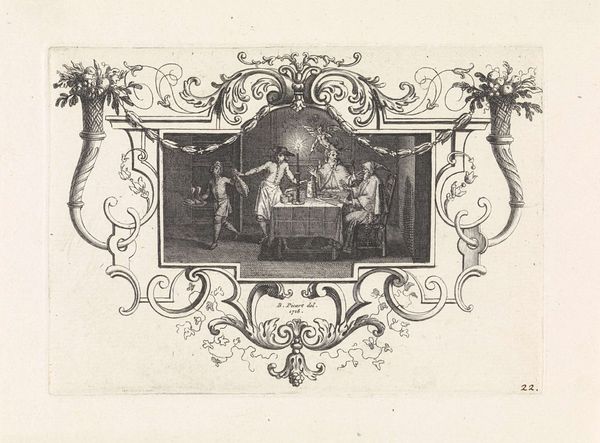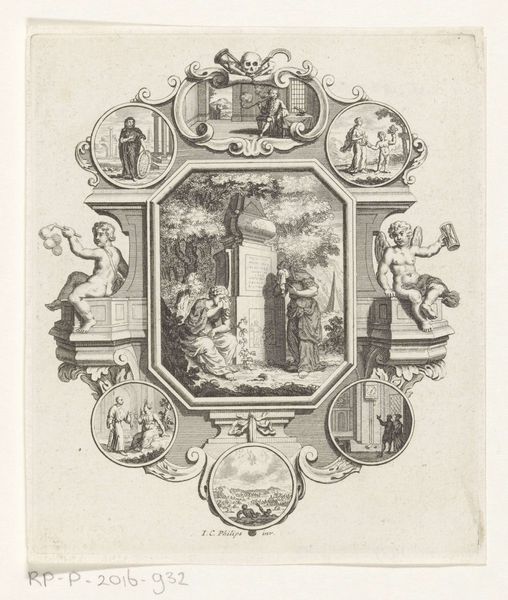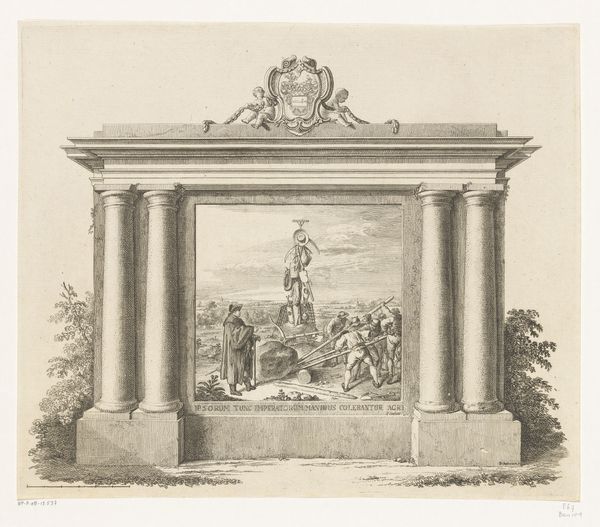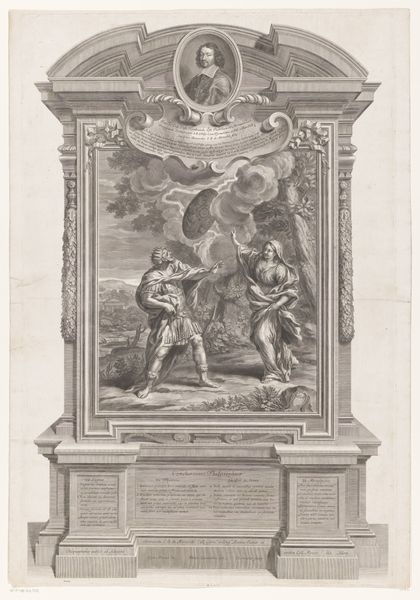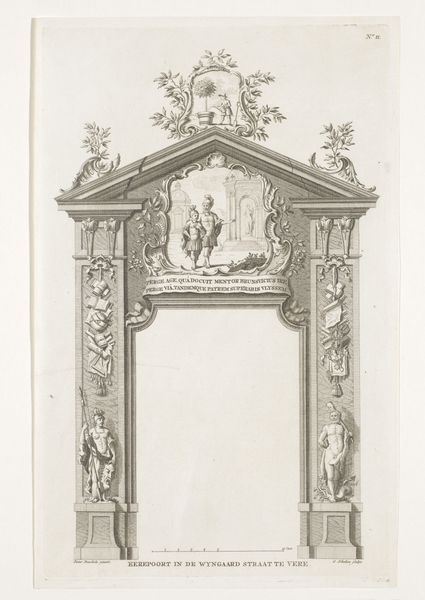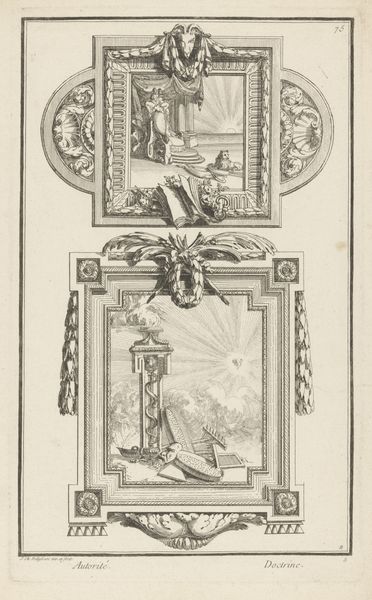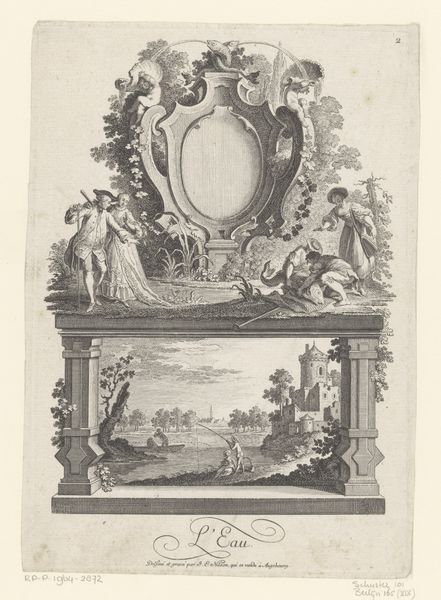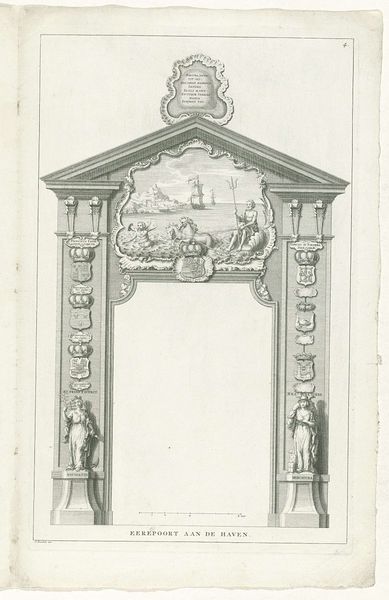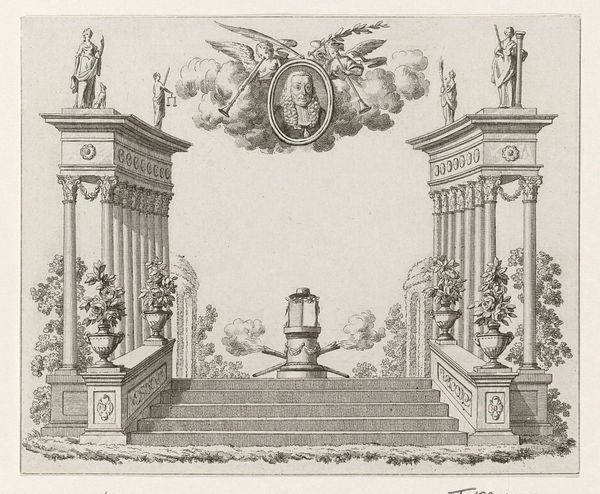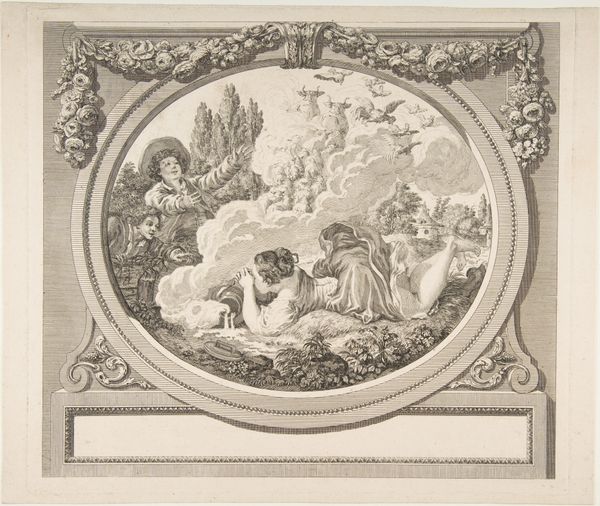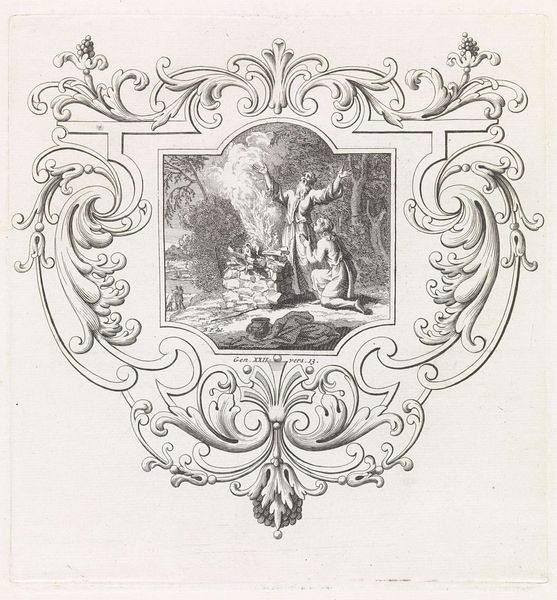
print, engraving, architecture
#
baroque
# print
#
landscape
#
plant
#
engraving
#
architecture
Dimensions: width 160 mm, height 135 mm
Copyright: Rijks Museum: Open Domain
Jan Goeree made this emblem of hyssop sometime between 1670 and 1731 using engraving techniques. The linear quality inherent to the engraving process allowed for a detailed representation of the scene, rich with symbolism. Engraving involves meticulously carving lines into a metal plate, which are then inked to create a print. Here, the technique captures both the aristocratic setting and the laborers at work. You’ll notice the contrast: the fine lines elegantly depict the architectural details of the estate, while also rendering the coarse textures of the workers' clothing and tools. This contrast isn’t accidental. Goeree was likely commenting on the social order of his time. The emblem’s materiality becomes a subtle commentary on the relationship between the elite and the working class, suggesting that even in the most polished settings, labor is always present, always necessary. Ultimately, understanding the “how” of this image—the labor of engraving itself—invites us to consider the labor it depicts, blurring the lines between art and social commentary.
Comments
No comments
Be the first to comment and join the conversation on the ultimate creative platform.

